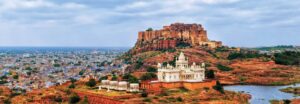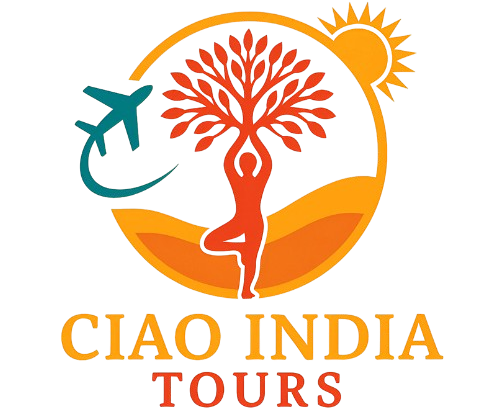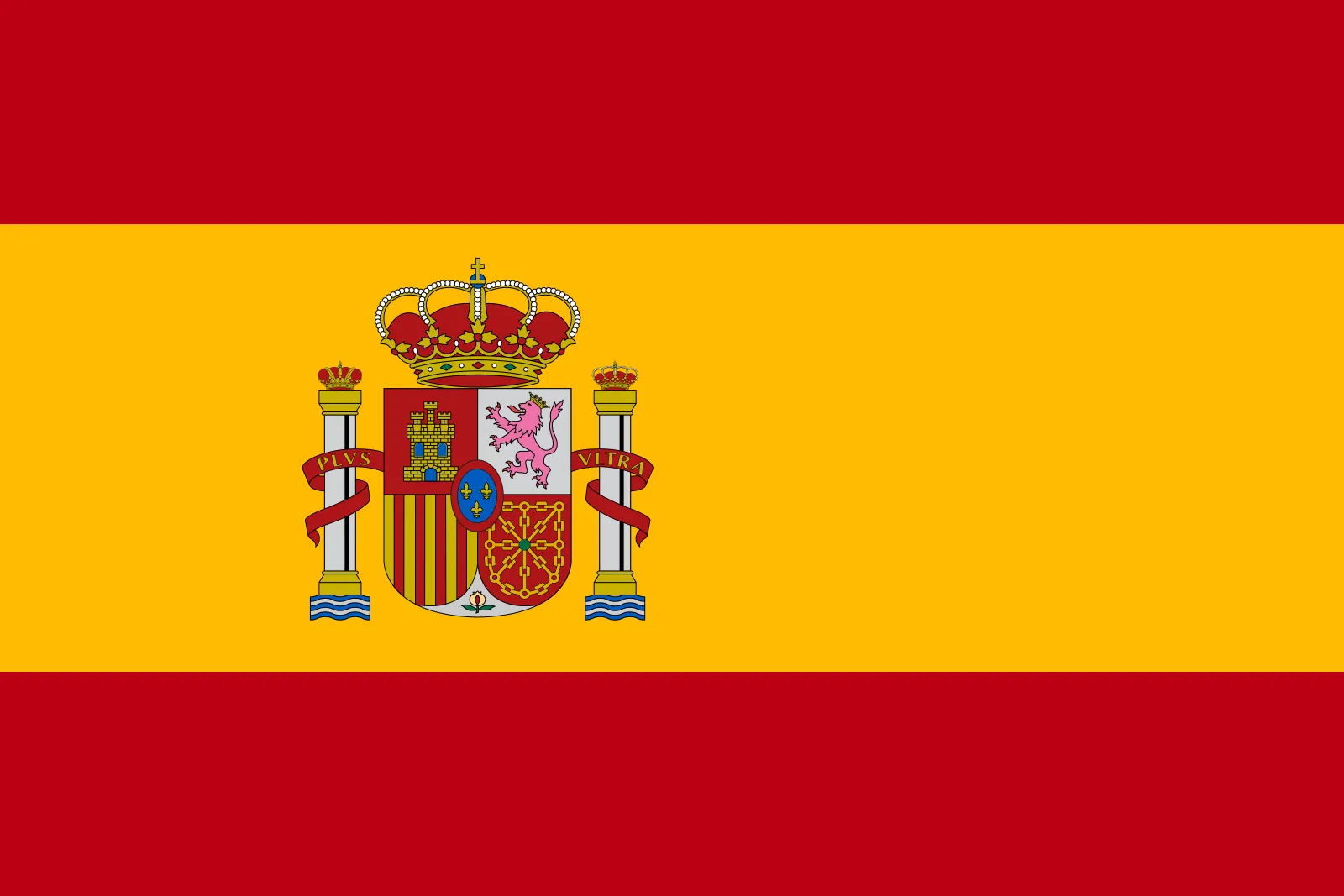Tour in Rajasthan
Program Preview
Delhi-Mandawa-Bikaner-Jaisalmer-Jodhpur-Ranakpur-Udaipur-Pushkar
Jaipur-Fatehpur Sikri-Agra-Delhi

DAY 1, Arrival In Delhi – Tour In Rajasthan
Arrival at New Delhi international airport. Following the habits, the immigration formalities and the baggage collection, ours will surely come out of the arrival terminal building after which it will be transferred to your hotel.
Capital of India and an important entrance to the country, contemporary Delhi is a vibrant metropolis, which successfully combines in its folds – the ancient with the modern. Among the fast-spiraling skyscrapers the remains of a time gone by in the form of silent historical reminders of the ancient influence of the region. First impressions for each visitor are a species, city of the garden, lined with numerous beautiful parks.
Upon arrival at the hotel, proceed to check-in at the hotel. Standard Check in Time at the hotel 1400 hours / Check out 1200 hours. In time proceed to the tour of old delhi and new delhi, the Red Fort (external photo stop), Jama Mosque, Chandni Chowk and Raj Ghat ..
Brief information on the monuments
In the 17th century, the Mughal emperor, Shah Jahan, made his capital at Shahjahanabad, the area that covers present-day Delhi, also called the walled city.
Jama Masjid is the largest and best known mosque in India. It is flanked by a red fort on one side and the old town Chandni Chowk on the other side. Built by Shah Jahan in the 17th century, Jama Masjid is one of the busiest in Delhi for pilgrims and tourists.
Red Fort (Photo stop) was built by the Mughal emperor Shah Jahan in the seventeenth century, which took about 9 years to complete this magnificent structure and about 10 million rupees to build the fort.
Candani Chowk The Delhi bazaar novel can best be experienced at Chandni Chowk and around the streets. According to legend, the Chandni Chowk market was established during the reign of the Mughal emperor Shah Jahan.
Raj Ghat, resting place of Mahatma Gandhi. Raj Ghat remembers the man who is known as the Father of the Nation for his tireless and pacifist work to recover the independence of India.
Overnight at hotel in Delhi – Tour in Rajasthan
DAY 2, Delhi – Mandawa (243 KM, 6 Hrs.) – Tour In Rajasthan
After breakfast, the day begins at 8:00 a.m. for Mandawa
The village of Mandawa and the visit of various Haveli
Visit of a small village actually called Mandawa is famous for its painted havelis (Palaces), is located in the heart of the Rajasthan Shekhawati region, known throughout the state for its painted “havelis” (palaces). Also called “Open Air Gallery of Rajasthan”. His havelis still show the wealth of the “Marwari Era” of the nineteenth century, our representative will be waiting to take a tour of Mandawa. Visit Aath Havelis, Poddar Haveli Anandilal, Bhagat Haveli.
Overnight at the hotel in Mandawa
DAY 3, Mandawa – Bikaner (192 KM, 3:30 Hrs.) – Tour In Rajasthan
After breakfast the day starts at 8:30 a.m.
We arrive in Bikaner, in the afternoon we visit the Junagarh Fort. The Fort was built under the supervision of Karan Chand, Prime Minister Raja Rai Singh, the sixth ruler of Bikaner, who ruled from 1571 to 1611 DC. The construction of the walls and associated moat began in 1589 and was completed in 1594. It was built outside the original fortress of the city, 1.5 km (0.93 miles) from the city center. some remains of the ancient fortress near the temple of Lakshmi Narayan preserved.
Overnight at the hotel in Bikaner
DAY 4, Bikaner – Jaisalmer (250 KM, 5 Hrs.) – Tour In Rajasthan
After breakfast the day begins at 8:30
Visit the Temple of the Topi (Karni Mata). The temple is famous for the approximately 20,000 black mice that live, and I am worshiped in the temple. These sacred rats are called Kabbas, and many people travel great
distances to pay tribute. The temple attracts visitors from all over the country for blessings and curious tourists from all over the world. Of all the thousands of rats in the temple, there are some white mice, which are considered particularly sacred. It is believed that the manifestations of Karni Mata herself and her four children. Watching them is a special blessing and visitors put in a great effort to carry on, offering Prasad, a sweet sacred food.
Arrival in Jaisalmer and transfer to the hotel.
Overnight at the hotel in Jaisalmer
DAY 5, A Jaisalmer – Tour In Rajasthan
After breakfast in Damodra Desert Camp the day begins at 8:30
Visit the fort of Sonar, with its golden walls rising from the edge of the desert. In Jaisalmer you will see beautiful mansions or havelis with balconies and windows covered by well carved screens. There are many beautiful ones along the narrow streets of the havelis town of Jaisalmer, which has a medieval atmosphere.
Lake Gadisar and the museum Nearby are also places to visit on day trips to Jaisalmer.
In the evening take the camel ride then return for dinner and the traditional dance show ..
Overnight at the hotel in Jaisalmer
 DAY 6, Jaisalmer – Jodhpur (286 KM, 5:30 Hrs.) – Tour In Rajasthan
DAY 6, Jaisalmer – Jodhpur (286 KM, 5:30 Hrs.) – Tour In Rajasthan
After breakfast the day starts at 8:30 a.m.
Departure for Jodhpur
Arrival in Jodhpur and visit the old city of Jodhpur, founded by Rao Jodhaji D.C. in 1459, it is surrounded by a 10 km wall to contain eight gates that serve as inputs. The new city built around this wall. Jodhpur is an exquisite mix of modern and traditional buildings.
Mehrangarh Fort is the main attraction. Inside Mehrangarh Fort are the famous buildings, Moti Mahal and Phool Mahal. Jaswant Thada is the royal 19th century cenotaph, which is built on thin sheets of marble that allows sunlight to filter through. visit the magnificent Umaid Bhawan Palace museum), a portion of Unmaid Bhawan Palace has been converted into a museum. The architectural splendor will surprise you.
Overnight at hotel in Jodhpur
 DAY 7, A Jodhpur – Tour In Rajasthan
DAY 7, A Jodhpur – Tour In Rajasthan
Dopo la prima colazione partenza per jodhpur alle 9:00
Si va a Visitare un piccolo villagio di Bishnoi
La Bishnoi – un gruppo tribale rurale, una setta indù fondata nel Punjab, che segue l’insegnamento di Jambeshwar, un saggio del XV secolo e un riformatore religioso che ha lasciato un retaggio di 29 (bis noi) principi. La campagna intorno a Jodhpur è sede di molti villaggi Bishnoi in ordine e composti familiari. Queste gentili comunità di ceramisti, tessitori, ricamatrici in pelle e pastori di cammelli hanno ottenuto fama mondiale per le loro convinzioni religiose conservatrici. Sono vegetariani, seguono i principi della non violenza e, soprattutto, proteggono reverentemente tutta la flora e la fauna. Non consentono l’abbattimento di alberi o la caccia sulle loro terre. Questa zona ospita la rara antilope blackbuck con notevoli corni a spirale. (Abbiamo visto un bel po ‘di creature graziose.) Pascolano liberamente, pienamente consapevoli, sembra, che nessuno qui li danneggerà.
La Bishnoi e l’opio Sebbene ora illegale in India e vietato dai 29 principi del Bishnoi, la setta lo usa ancora e ha ricevuto un consenso speciale dal governo indiano per usare l’oppio per scopi “religiosi”. Dal punto di vista legale, è consentito utilizzare solo bachi vuoti di papavero, dopo che l’oppio è stato estratto per la produzione medica. I baccelli vengono poi macinati, mescolati con una soluzione di zucchero, quindi diluiti ulteriormente con acqua per la cerimonia. Quindi, in realtà, sembra che non ci sia quasi oppio nella miscela?
Si ritorna in pomeriggio e Serata libera per rilassarsi
Alla sera se volete visitate un mercato locale
Pernottamento in albergo a Jodhpur
 DAY 8, Jodhpur – Udaipur (259 KM, 5 Hrs.)
DAY 8, Jodhpur – Udaipur (259 KM, 5 Hrs.)
After breakfast, departure for Udaipur at 8:00
En Rute You visit Ranakpur Jain Temple. These times are Jain’s most renowned times. built in the 15th century covering an area of 40,000 square feet with several rooms and columns that are individually sculpted. Ranakpur is a village located in Desuri tehsil near the town of Sadri in the Pali district of Rajasthan in western India. It is located between Jodhpur and Udaipur. 162 km from Jodhpur and 91 km from Udaipur, in a valley on the western side of the Aravalli range. The nearest railway station to reach Ranakpur is the Falna railway station.
Ranakpur is one of the most famous places to visit in Pali, Rajasthan. Ranakpur is easily accessible from the road from Udaipur. Along with the magnificent architecture and numerous pillars, the place is also famous for the large population of monkeys that live in and around the place. The ladies of the city donated 90 ounces of gold to the construction of the temple. Ranakpur is widely known for its Jain marble temple, which is said to be the most spectacular of the Jain temples. There is also a small sun temple run by the royal family of Udaipur.
Transfer to hotel upon arrival in Udaipur
Overnight at hotel in Udaipur
 DAY 9, Udaipur
DAY 9, Udaipur
After breakfast the day begins at 8:30
No city in Rajasthan is as romantic as Udaipur. This picturesque town stands on the shores of Lake Pichola. Udaipur is the city of lakes, surrounded by natural and artificial lakes, which are relaxing and crystalline.
Proceed for a sightseeing tour of Udaipur by visiting the museum of the city palace, the temple of Jagdish and Sahelio ki Baari.
City Palace is the largest palace complex in Rajasthan and is located on the eastern shore of the serene Lake Pichola. Built in marble and granite in 1725 by Maharana Udai Singh. A refined blend of medieval Indo-European architecture, you will be amazed by the little lust of its courtyards, overlapping walls, terraces, corridors and lush green gardens.
The temple of Jagadish next to the City Palace establishes a black stone image of Lord Vishnu and his vehicle – a powerful bird called garuda – in a brass image. The temple is a fine example of Indo-Aryan art. A majestic garden located on one of the shores of Lake Fateh Sagar,
Saheliyon-ki-Bari has expensive lawns, shady sidewalks on foot and imposing fountains. It is one of the best places in Udaipur to relax. Later enjoy a boat ride in Lake Pichola. (Depends on the water level)
Lake Pichola, the beautiful stretch of water that surrounds the two wonderful structures of the Jag Niwas and Jag Mandir, is the lifeline of the city of Udaipur.
Overnight in a hotel in Udaipur
DAY 10, Udaipur-Pushkar-Jaipur (390 KM 5:55)
After breakfast the day begins at 8:30
Departure for Pushkar
Visit Pushker lake (Lake Pushkar), Brahma temple (Temple of Brahma)
Pushkar is a city that overlooks the Thar Desert, in the northeastern Indian state of Rajasthan. It is located on Pushkar Lake, a sacred Hindu site with 52 ghats (stone stairs) where pilgrims bathe. The city has hundreds of temples, including Jagatpita Brahma Mandir of the fourteenth century, dedicated to the god of creation of the universe, which has a red spire and walls engraved with silver coins of pilgrims.
Departure for Jaipur, Arrival in Jaipur and transfer to the hotel, Free evening for relaxation
Overnight at the hotel in Jaipur
DAY 11, Jaipur
opo a Prima colazione la giornata comincia alle 8:00
Si visita il forte Amber,Jaipur City Palace, Jantar Mantar,Hawa Mahal
Amer Fort è una fortezza situata ad Amer, nel Rajasthan, in India. Amer è una città con un’area di 4 chilometri quadrati (1,5 miglia quadrate) situata a 11 chilometri (6,8 miglia) da Jaipur, la capitale del Rajasthan. Situato in cima a una collina, è la principale attrazione turistica nella zona di Jaipur. La città di Amer fu originariamente costruita da Meenas, e in seguito fu governata da Raja Man Singh I (21 dicembre 1550 – 6 luglio 1614).
Amer Fort is a fort located in Amer, Rajasthan, India. Amer is a town with an area of 4 square kilometres located 11 kilometres from Jaipur, the capital of Rajasthan. Located high on a hill, it is the principal tourist attraction in Jaipur.
City Palace, The City Palace, Jaipur was established at the same time as the city of Jaipur, by Maharaja Sawai Jai Singh II, who moved his court to Jaipur from Amber, in 1727. The most prominent and most visited structures in the complex are the Chandra Mahal, Mubarak Mahal, Shri Govind Dev Temple, and the City Palace Museum.
Jantar Mantar Jantar Mantar is located in the modern city of New Delhi. It consists of 13 architectural astronomy instruments. The site is one of five built by Maharaja Jai Singh II of Jaipur, from 1723 onwards, revising the calendar and astronomical tables
Hawa Mahal (Photo Stop) is a palace in Jaipur, India. Made with the red and pink sandstone, the palace sits on the edge of the City Palace, Jaipur, and extends to the Zenana, or women’s chambers. The structure was built in 1799 by Maharaja Sawai Pratap Singh, the grandson of Maharaja Sawai Jai Singh, who was the founder of Jaipur.
Overnight in a hotel in Jaipur
DAY 12, Jaipur – Fatehpur Sikri- Agra (241 KM 4 :30 )
After breakfast the day starts at 8:30
Departure for Agra
You visit abhaneri step well Abhaneri step well, Fatahpursikri
The era of Abhaneri originally called Abha Nagri, which means “city of brightness”, is a cause of erroneous declaration, the name has been changed. The city is now in ruins but attracts tourists from all over the world.
Abhaneri is prominent for the ‘Baoris’, wells that were invented by the natives to collect rainwater. These tanks are used as cold storage areas and as water reservoirs during the year. Chand Baori is the most popular of the wells in the region, and is one of the deepest and largest of India. There are three ways to reach the water. This colossal and delicately carved well is located in front of the temple of Harshat Mata. It was a ritual to wash your hands and feet at the well before visiting the adjacent temple.
Fatahpursikri Built by the Mughal emperor Akbar in the mid-16th century, Fatehpur Sikri was to be a new capital for his empire. Built in almost uniform style, Sikri is a complex sprawling of palaces, mosques, temples and other structures. It is a splendid fusion of the present Persians and Indian construction.
Overnight at the hotel in Agra
DAY 13, Agra – Delhi ( 238 KM 4 Hrs.)
After breakfast at the hotel, the day begins
Taj Mahal It is one of the seven wonders of the world and a place to be seen in India. He is the living example of the romantic life of Shah Jahan and his beautiful wife Mumtaz Mahal. The construction of this beautiful monument was completed in 1653 AD. The Mughal king Sha Jahan built this as a final resting place for Queen Mumtaz.
After the visit of Taj Mahal, we proceed to visit the Agra Fort.
Agra Fort Immersed in the strong banks of the Yamuna river, this crescent-shaped fort was commissioned by Akbar, one of the greatest emperors of the Mughals, in 1565. Surrounded by mighty bastions, the complex has numerous palaces, gardens and sales inside the fort. and other historic sites.
Departure for Delhi, Arrival in Delhi and transfer to the hotel, Free evening for relaxation
Overnight at Hotel
DAY 14, A Delhi
After breakfast the day starts at 8:30
Visit Humayun’s Tomb, Qutub Minar, Lotus temple, Bangla Sahib
Humayun’s era is the second Mughal Emperor of India who died in 1556 and his widow Hamida Banu Begam, who also called Haji Begam, began the construction of his tomb in 1569, fourteen years after his death. Humayun’s tomb is the first example of a true mogul style, inspired by Persian architecture.
Qutab Minar is among the highest and most famous monuments in the world. This beautiful minaret is 234 feet high and is considered to be the tallest tower in the world. The Qutab Minar is one of many masterpieces depicting the sheer brilliance of Mughal architects.
Parliament house and President’s House (Photo stop)The Parliament of India is the supreme legislative body of the Republic of India. It is a bicameral legislature of the President of India and the two houses: the Rajya Sabha and the Lok Sabha The Rashtrapati Bhavan is the official residence of the President of India located at the Western end of Rajpath in New Delhi, India.
The Lotus Temple, The Lotus Temple, located in Delhi, India, is a Bahá’í House of Worship that was dedicated in December 1986. Notable for its flowerlike shape, it has become a prominent attraction in the city. Like all Bahá’í Houses of Worship, the Lotus Temple is open to all, regardless of religion or any other qualification.
Gurudwara Bangla Sahib is one of the most prominent Sikh gurdwara, or Sikh house of worship, in Delhi, India and known for its association with the eighth Sikh Guru, Guru Har Krishan Sarovar
Overnight at hotel in Delhi
DAY 15, Delhi – Your Destination
Transfer to the airport according to the flight schedule
Ciao India Tours wishes you a very pleasant journey.
Tour in Rajasthan





